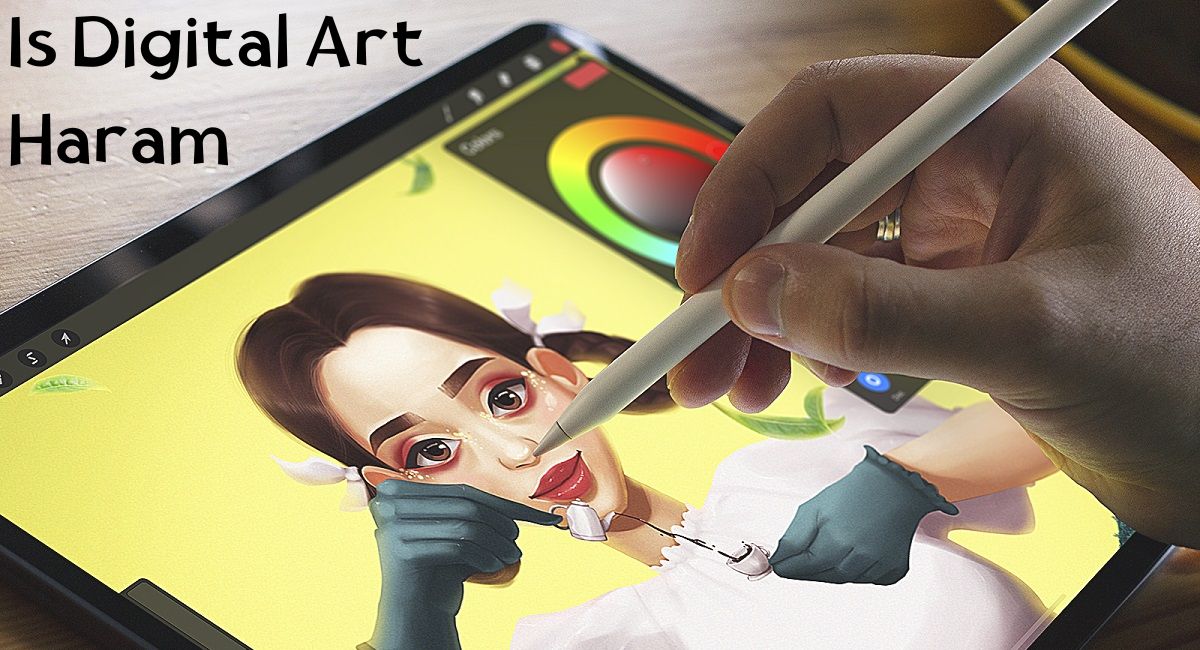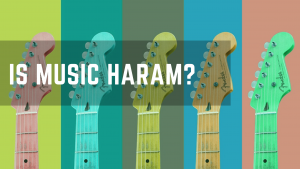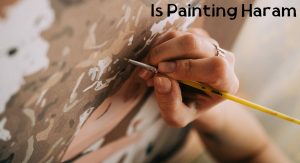The question of whether digital art is considered Haram, or forbidden in Islam, has sparked debates and discussions among Muslims and art enthusiasts alike. As technology continues to evolve, so do the forms of artistic expression, and digital art has become increasingly popular in recent years.
In this article, we will explore the various perspectives within the Muslim community regarding the permissibility of digital art, taking into account religious principles, cultural considerations, and the evolving nature of art in the digital age.
While opinions on this matter may vary, it is essential to approach the topic with sensitivity and an understanding of the diversity of perspectives within the Islamic world.
What is Digital Art
Digital art refers to any form of art that is created or manipulated using digital technology. It encompasses a wide range of artistic expressions, including but not limited to:
- 2D Digital Art: This includes digital paintings, illustrations, and graphics created using software such as Adobe Photoshop, Corel Painter, or GIMP. Artists use digital drawing tablets or stylus pens to create these works.
- 3D Digital Art: Artists use 3D modeling software like Blender, Maya, or ZBrush to create three-dimensional digital sculptures, characters, and environments. These creations can be static or animated.
- Digital Photography: While traditional photography involves film and darkroom processes, digital photography involves using digital cameras to capture and manipulate images. Editing software like Adobe Lightroom and Adobe Photoshop is often used to enhance and manipulate digital photographs.
- Digital Mixed Media: Artists combine various digital elements such as photos, illustrations, and textures to create unique compositions. This can include collage-style art or multimedia installations.
- Digital Animation: Animators create moving images and videos using digital tools and software. This can range from 2D animations like those seen in cartoons to 3D animations used in movies and video games.
- Generative Art: Generative art is created using algorithms and computer programs that generate artwork autonomously. Artists program the rules and parameters, and the computer generates the art based on these instructions.
- Digital Calligraphy and Typography: Artists use digital tools to create intricate and stylized lettering, often for design purposes in advertising, branding, and graphic design.
- Digital Installations: These are immersive art experiences that often incorporate technology, interactive elements, and digital displays to engage the audience in unique ways.
Digital art provides artists with a wide range of creative possibilities, including the ability to easily undo mistakes, experiment with different techniques, and collaborate with artists worldwide through the internet. It has become increasingly popular in contemporary art and has expanded the boundaries of what is possible in artistic expression.
Is Digital Art Haram
The permissibility of digital art in Islam, particularly when it involves representations of living beings, is a subject debated among Islamic scholars. This debate centers around the concept of ‘tasweer’ (picture making) within Islamic jurisprudence.
Some scholars, including those from the Indian subcontinent and certain Arab regions, consider photographs of living things impermissible, aligning with the general prohibition of picture making by Prophet Muhammad, regardless of the method used (e.g., carving, drawing, painting).
They argue that the prohibition is not about the means but the act itself. In contrast, many Arab scholars view picture making through cameras as permissible, considering camera photos as reflections of Allah’s creation rather than products of human imagination.
This debate extends to digital images stored on digital systems and cameras, where scholars have yet to reach a consensus due to the novelty of the technology and the lack of direct references in the Quran or Hadiths.
Arguments in Favour of Digital Art Being Haram
The Islamic perspective on whether digital art is permissible or not varies among scholars, and there are several arguments and religious references that are cited in this debate.
Prohibition Based on General Ruling Against Depicting Animate Life
There are hadiths that mention the prohibition of making images of animate life, considering it a major sin.
For instance, a hadith in Bukhari states, “Every maker of pictures will go to the fire, where a being will be set upon him for each picture he made to torment him in hell.”
Another hadith mentions, “Whoever makes an image shall be required (on the Last Day) to breathe a spirit into it but will never be able to do so”.
Some scholars interpret these hadiths as encompassing all forms of images, including digital art, especially when they represent animate beings. This view is based on the idea that the prohibition in Islam is against the act of picture making itself, not the method used to create them.
Distinction Between ‘Pictures’ and ‘Images’ in Digital Context
The discussion among contemporary scholars revolves around whether digital images stored in computers and other devices are considered prohibited pictures or not. Since digital art is a recent development and was not known during the time of the Prophet Muhammad and early Islamic jurists, there is no clear, direct verdict in the Quran or Hadith.
Some scholars argue that digital images, which are composed of pixels and do not have a physical structure, may not fall under the prohibition. They differentiate between a ‘picture’ (captured by a camera) and an ‘image’ (visible on a screen), with some considering the latter as not falling under the same ruling as traditional pictures.
Permissibility under Specific Conditions
The usage of devices like computers for various purposes, including creating digital art, is permissible as long as one refrains from depicting religiously impermissible content such as nudity or mockery. This view sees digital devices primarily as tools for information.
There is consensus among Muslim scholars that pictures of inanimate objects are permissible. This could extend to digital art that does not depict animate beings.
Diverse Opinions among Scholars
While drawing animate pictures by hand is generally prohibited by the majority of scholars, the permissibility of picture-taking with devices and, by extension, digital art, is a subject of debate. Some scholars view these as permissible in certain necessary circumstances.
Hope in Allah’s Mercy
The Quran mentions Allah’s mercy and forgiveness, “O My slaves who have wronged themselves! Never lose hope in the mercy of Allah. Verily Allah forgives all sins. Indeed, He is the Most Forgiving and the Most Merciful”.
This verse, while not directly related to the issue of digital art, underscores the broader Islamic principle of seeking forgiveness for actions that may be considered sinful.
Arguments Against Digital Art Being Haram
The Islamic perspective on the permissibility of digital art, particularly regarding the depiction of animate beings, varies among scholars, and the arguments in favor of its permissibility often involve the following points:
Differing Scholarly Opinions: There is no consensus among contemporary Islamic scholars on the prohibition of digital images. While some scholars, particularly in the Indian subcontinent and among some Arab scholars, view photographs of living things as impermissible, others do not share this view.
Nature of Digital Images: Some scholars argue that digital images are not traditional ‘pictures’ but rather a collection of electronic rays and pixels, which do not have a physical structure and do not remain permanently on screens or walls. This transient nature of digital images is seen as a key difference from traditional forms of image-making that are prohibited in Islam.
Difference in Definition: There is a distinction made between ‘pictures’ and ‘images’ in the context of digital art. ‘Pictures’ are defined as having permanence and continuity, while digital ‘images’ are characterized by their impermanence and the fact that they appear and disappear rapidly on screens.
Permissibility of Inanimate Objects: There is general agreement among Muslim scholars that pictures of inanimate objects are permissible. This could extend to digital art that does not depict animate beings.
Camera Photos as Reflections: Some scholars argue that photographs taken with a camera are not creations of one’s imagination but are reflections of beings already created by Allah. This view holds that such images are permissible because they do not involve the creation of new forms but are merely capturing what already exists.
Varied Interpretations of Religious Texts: Due to the lack of explicit references in the Quran and Hadith about modern digital images, scholars have to interpret these texts in the context of contemporary technology, leading to varied opinions.
Divergence on Photography with Devices: The permissibility of taking pictures with photographic devices is a subject of debate among contemporary scholars. While some view these as general prohibitions, others suggest that these images are more akin to capturing a shadow or trace, and thus, might not fall under the religious prohibition.
For a comprehensive understanding of the permissibility of various art forms in Islam, explore these thought-provoking articles.
Is Drawing Haram in Islam: Explore the Islamic perspective on drawing and its permissibility in religious doctrine. Delve into the nuances of this age-old debate to better understand its implications in the context of Islamic culture and tradition.
Is Painting Haram in Islam: Uncover the Islamic stance on painting as an art form. This article examines whether painting is considered haram (forbidden) or allowed within the boundaries of Islamic ethics, shedding light on various interpretations and historical viewpoints.
Frequently Asked Questions
1. What does islamic law say about taking photos with digital cameras?
The permissibility of taking photos with digital cameras is debated among contemporary scholars. Some consider them as pictures that fall under the general prohibition, while others view them as mere reflections or traces of existing objects, which may not be prohibited. The stronger opinion among some scholars is that such photography is prohibited in general circumstances, but permissible in cases of necessity, such as for identity documents or security purpose.
2. Are there any types of digital images considered permissible in islam?
Yes, pictures of inanimate objects are generally considered permissible across the Muslim nation. The prohibition mainly concerns images of animate beings, and there’s a significant debate regarding these in the context of digital technology. Some scholars allow digital images that lack permanence and continuity, distinguishing them from traditional forms of images that are carved, drawn, or otherwise formed with permanence.
3. Can digital art be used for educational or professional purposes?
The use of digital images for educational or professional purposes falls into a gray area and is often subject to the intention and content of the images. The usage of digital technology for information and legitimate purposes, avoiding religiously impermissible content, is generally considered permissible. However, creating or using images of animate beings, especially in a revered or idolized manner, remains contentious.
4. How do scholars differentiate between digital images and traditional pictures?
Scholars differentiate between ‘pictures’ and ‘images’ in the context of digital technology. ‘Pictures’ are traditionally defined as having a quality of permanence and continuous existence, whereas digital ‘images’ are characterized by their transient nature, appearing and disappearing rapidly on screens without any physical or permanent form.








